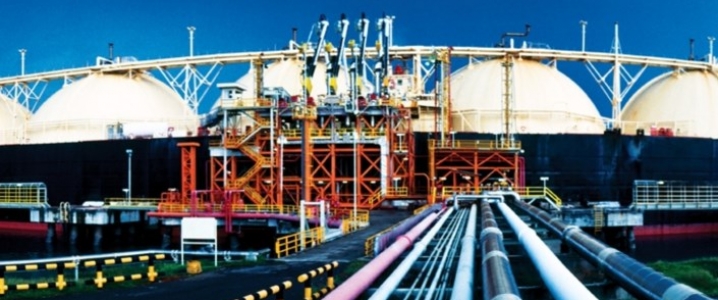Liquefied natural gas (LNG) prices remain under pressure amid warmer temperatures in the Northern Hemisphere, with more warm winter months projected in the world’s top three LNG importing countries - Japan, China and South Korea. The downward trajectory in oil prices, particularly London-traded Brent crude futures, is also weighing on LNG prices, especially spot prices in Asia which represents around nearly three-quarters of all global LNG demand.
This downward LNG pricing cycle is unusual for this time of year when LNG prices are usually robust as major LNG importers finish topping off storage levels ahead of winter. However, this year major Asian LNG importers are reportedly already full and practically running over with the super-cooled fuel.
Lower LNG prices are also creating a somewhat new dynamic akin to what oil traders have been doing for decades during periods of contango, storing oil on tankers while waiting for prices to increase. Contango, also sometimes called forwardation, is a situation where the futures price of a commodity is higher than the anticipated spot price at maturity of the futures contract.
The hedge is that prices will increase enough to offset the extra cost of storage for both oil and also LNG. LNG storage is a bit more complicated since LNG boil off rates increase the longer its stored, while it is also more expensive to store since the fuel has to be cooled at lower temperatures. However, newer LNG tankers, using recent technology has made it increasingly feasible to keep LNG at minus 162 degrees Celsius for longer periods of times.
In fact, according to cargo-tracking company Kpler SAS there are about 30 ships flagged as floating storage world-wide, with two-thirds of them in the Asia-Pacific region, predominately laying off the ports of Singapore and Malaysia. However, that still pales in comparison to the global fleet which comprises around 500 vessels.
Another factor adding to the growing trend of storing LNG in tankers offshore is the development of floating, storage and regasification units which have lower boil off points, larger capacity and reliquefication facilities on board to keep the fuel cool.
Related: Natural Gas Drives Saudi Geopolitical Pivot
LNG spot prices in Asia could continue to drop, while they have recently hit fresh lows for this time of year. Last week spot prices for the super-cooled fuel in Asian tumbled some 10 percent, hitting three month lows. Reuters, citing traders, said that LNG spot prices for January delivery in North Asia LNG-AS were estimated at $10 per million British thermal units (MMBtu), 90 cents lower than last week.
Meanwhile, the outlook for LNG prices amid warmer temperature forecasts in the Northern Hemisphere will continue to put negative pressure on LNG prices, increasing contango and the storage on vessels waiting for prices to increase.
On Thursday, crude prices hit fresh year lows amid concerns of an impending supply overhang, which will also keep LNG prices in Asia, which are still often linked to Brent oil futures, lower. Oil prices were hit by another wave of heavy selling Thursday, with fears of climbing production dragging the two most popular benchmarks to lows not seen in more than a year, the Wall Street Journal reported.
Brent crude (the global oil benchmark) ticked up 0.80 percent, at $59.22 a barrel, on London’s Intercontinental Exchange. West Texas Intermediate (WTI) crude futures, the U.S. oil standard, increased slightly, by 0.99 percent, to $50.77 a barrel, on the New York Mercantile Exchange. The U.S. crude grade fell below $50 a barrel for the first time in almost 14 months, earlier in the trading session. Saudi Arabia and OPEC are expected to announce production cuts at the OPEC ministerial meeting in Vienna, Austria on December 6. Russia, for its part, appears to be waffling at the moment, and may not be as willing to join output cuts as it did in early 2017 to help reign in the oil supply glut at the time.
By Tim Daiss for Oilprice.com
More Top Reads From Oilprice.com:
- How Much Does OPEC Need To Cut To Balance The Market?
- Mexico’s Oil Crisis Deepens
- Aramco’s $500 Billion Global Expansion


















